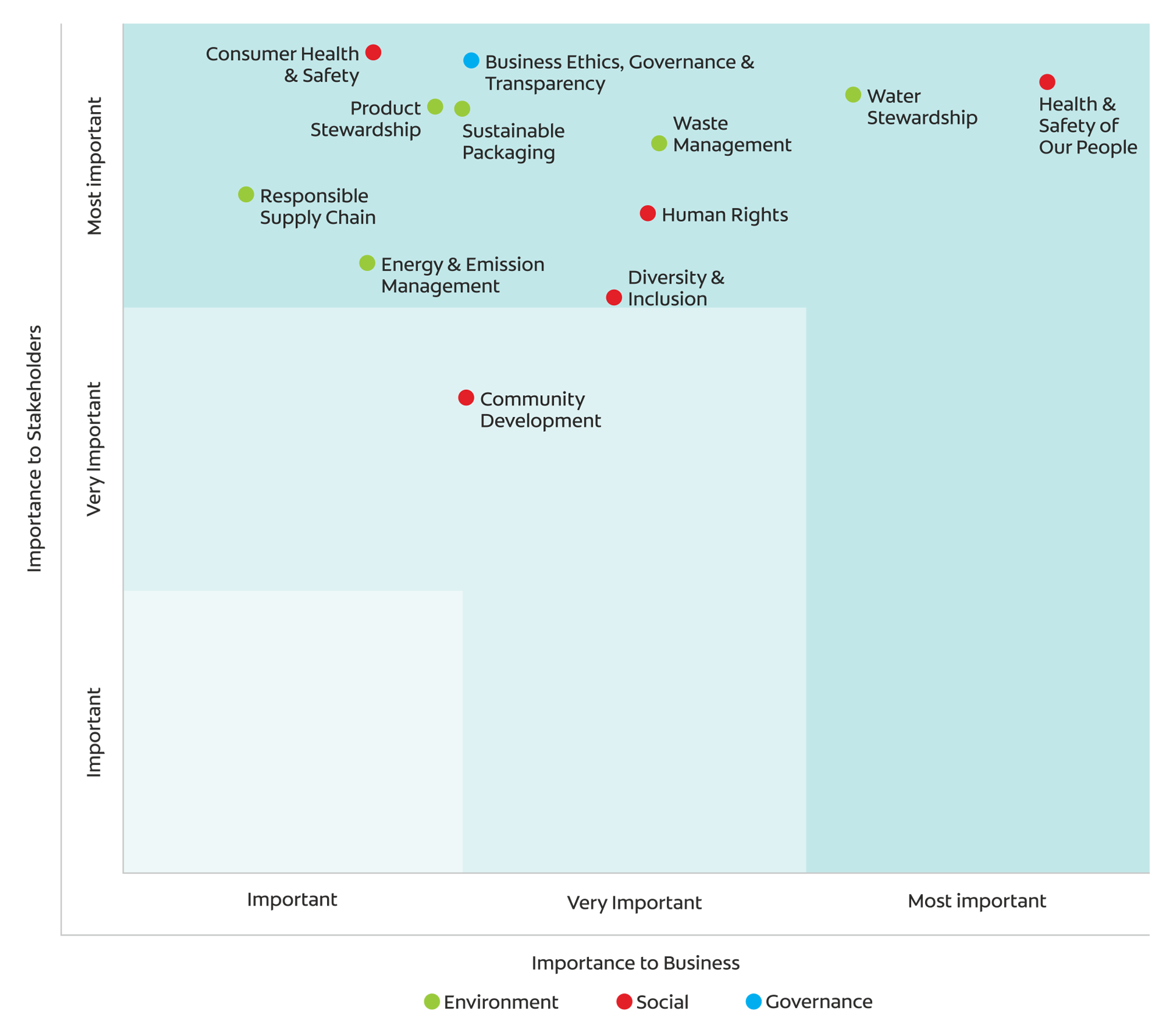Statutory Section
With the emergence of the GRI 2021 standards, in FY 2021-22, we revised our materiality assessment to follow a 5-step systematic approach, aimed at identifying positive and negative impacts across all business activities, operations, and the external environment, concerning the economy, environment, and stakeholders. The findings are outlined in this report, accompanied by further elaboration on each issue and the corresponding actions taken. We shall continue to update our assessment as needed.





We believe ensuring stakeholder inclusiveness at each step of our materiality process fosters transparency, builds trust, and enhances accountability. By actively engaging with stakeholders, we gain valuable insights, identify emerging issues, and mitigate potential risks. We have a four-step approach to ensure stakeholder inclusiveness. This approach helps us create the Materiality Matrix, providing a holistic view of what is important to us and our stakeholders.

A deep understanding of materiality is vital to our ESG strategy and reporting. In FY 2021-22, we undertook a materiality assessment, guided by the Global Reporting Initiative (GRI) Standards to further understand stakeholder insights on the relevance of Environmental, Social and Governance (ESG) matters. We further undertook an analysis to gain insights into the profound impact as well as relationship between our ESG material topics and business risks and opportunities.
The assessment enabled us to prioritize topics that have a significant influence on our strategy, in addition to outlining the boundary of our ESG report. Business Ethics, Governance & Transparency is high on priority for us across all 3 pillars of ESG.

